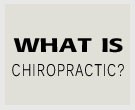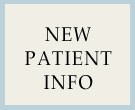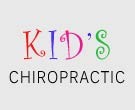Seven out of 10 people in the U.S. have at least one headache a year. The majority of headaches last only two to three hours, but some can persist up to two weeks at a time. The two main types of headache are primary and secondary. More than 90 percent of all headaches are primary headaches, which include tension-type, migraine and cluster headaches. Secondary headaches are those that result from specific medical conditions such as an infection or increased pressure in the skull due to a tumor. These headaches account for fewer than 10 percent of all headaches.
How do Headaches develop?
The cause of headaches is not yet completely understood. Although genetics may play a role in predicting the likelihood of a person with problem headaches, this has been difficult to verify. Muscle tension headaches seem to arise from genetic vulnerability and the environment such as stress and bad posture. Migraine headaches affect approximately 25 million people in the U.S. each year. There are numerous possible causes for migraines, ranging from functional changes in the trigeminal nerve system to mineral and/or nutritional imbalances to hormonal irregularities. Close to 80 percent of all individuals who suffer from migraines have a close relative with the disorder. Depression is known to cause both migraines and tension headaches. Headaches may also be triggered by allergies and poor eating habits.
If headaches occur in conjunction with neck pain they may be a result of loose or injured ligaments in the neck vertebrae, which can cause referred pain to the head.
What are the Symptoms of a Headache?
Symptoms vary according to type of headache. A muscle tension headache is described as a constant and throbbing pain, usually felt above the eyes or more generally over the head. Pressure felt behind the eyes may be accompanied by tightness around the neck. Migraine headache symptoms include anxiety and mood changes, an altered sense of taste and smell, either an excess or a lack of energy, visual disturbances, a pins-and-needles sensation or numbness in the face, pounding on one side of the head, nausea and a dislike of bright light or loud noises.
Conventional medical treatments may help relieve the symptoms of headaches but they do not address the root of the problem. Generally, by undergoing comprehensive natural medicine testing, the reasons for recurring or chronic headaches can be found. Some of these reasons include sensitivities or allergies to foods, hormonal irregularities and referred pain patterns.
Discover why we believe that natural treatments are the best way to treat headaches.
Natural vs. Medical Approach to Headaches
Modern Medicine’s Approach to Headaches
The traditional modern medical recommendation for headaches is pain medications such as acetaminophen (Tylenol), aspirin or ibuprofen (Motrin, Advil, etc.). In the event that over-the-counter medications are ineffective, stronger medications may be used. For example, antidepressants may be prescribed to prevent headaches before they occur for individuals who get them frequently. Relaxation techniques and massage or heat to the back of the neck may also be recommended. The problem with all these approaches is that they do nothing to get at the root of the problem. In addition, long-term use of medications such as aspirin and ibuprofen can lead to other problems, including allergies and leaky gut syndrome.
The Natural Approach to Headaches
As with all symptoms, conditions and diseases, the goal of natural medicine is to identify and treat the underlying cause. Food allergies; hormonal cycles in women, which usually trigger migraines; and referred pain may all be culprits. In many instances, chronic headaches involve multiple factors. For this reason, a natural medicine doctor will do comprehensive diagnostic testing in order to address all the factors that may be causing the pain.
Headaches sometimes occur after eating certain foods. A food allergy is confirmed by testing for allergies and, if positive, a hypoallergenic diet is recommended. If the headache occurs before a woman menstruates (PMS), a hormonally induced migraine may be involved. Hormone tests are done to confirm the diagnosis, and typically an estrogen-lowering diet plus supplements such as flax seed oil and cod liver oil would be recommended.
Headaches may also occur in conjunction with neck pain, which may involve referral pain patterns from the head and the neck and could be due to poor head posture or Barre-Lieou syndrome, which involves an instability of the neck vertebrae, typically caused by loose ligaments. In order to confirm this scenario, positive jump signs are elicited by putting pressure on specific spots in the head and neck area. If a positive jump sign occurs, Chiropractic and natural supplements are the treatment of choice. Chiropractic stimulates the body to repair painful areas by balancing your nervous system. Since the body is controlled by the nervous system, Chiropractic stimulates healing.
If you are interested in more information about natural treatments or to schedule an appointment, please contact Dr. Laboret at 972-671-5263.
Disclaimer: The preceding is to provide information about relief and the benefits that may be derived. It is not intended to claim a cure for any disease or condition. It should not take the place of your doctor’s advice or treatment.






